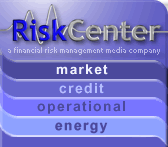Location: New York
Author: Lenny Broytman
Date: Thursday, October 25, 2007
Over the course of the past year, the endless woes of the US housing market
have become explicably tied to the word ‘subprime’ as the result of mounting
foreclosure rates among low-income/poor-credit borrowers.
But according to the Wall Street Journal, the ugly monster that has become
the domestic credit crunch is showing its teeth once again, with loans that
were classified as prime at their origin spiraling downward in record
numbers.
These loans, which are known as option adjustable-rate mortgages (option
ARMs), are very similar in nature to subprime ones. They have relatively low
introductory rates and allow for minimal payments during the beginning
periods of the loans’ lifetime. Something known as “negative amortization”
is also part of the deal and inflates loan balances if borrowers choose to
make a minimum payment that includes none of the principal and only a
portion of the interest that is normally due.
The loans became an instant success when Countrywide first unveiled them in
2003 but as of late, a UBS AG analysis shows that 3.55 percent of option
ARMs originated by Countrywide in 2006 and packaged into securities that
were ultimately sold to investors are at least two moths past due. In
regards to how Countrywide fairs when compared to the other giants within
the same sector, Countrywide’s delinquency rate is a full percentage point
higher than that of all other competing lenders.
According to UBS analyst Shumin Li, “they were giving these loans to riskier
and riskier borrowers.” Furthermore, it is crucial to point out that the
sharp upturn in late payments and delinquencies also stems from home prices
in the US that have been dropping lower and lower for quite some time now.
Among option ARMs held in their own portfolio, 1.6 percent of Countrywide
borrowers before 2006 were at least 30 days late on their payments. As of
June 30, that figure had climbed to 5.7 percent. The Wall Street Journal
writes that “Countrywide held $27.8 billion of option ARMs as of June 30,
accounting for about 41% of the loans held as investments by its savings
bank. An additional $122 billion have been packaged into securities sold to
investors, according to UBS.”
What was once a problem limited mainly to the subprime sector is evidently
beginning to make its way to the prime folks and the Journal says that ‘lax
underwriting’ is one of the biggest culprits. According to Moody’s
Economy.com, the problem could get a whole of a lot worse within a few years
(2009 to 2011) when these option ARMs are adjusted to account for
market-rate interest as well as principal.
Reiterating his utter confidence in the notion that the company will
undoubtedly come out of the credit crunch with their heads above water,
Countrywide Chairman and CEO Angelo Mozilo noted that delinquent payments
are “bleeding” into prime mortgages.
Part of the problem could be the result of the simple fact that option ARMs
do have the potential to be quite profitable. Tom LaMalfa, a managing
director of Wholesale Access, found that the average broker’s commission on
an option ARM ranges from 1.75 percent to 2.5 percent. To get an idea of the
inflated profit margins for these brokers, the average standard fixed-rate
mortgage provides the average broker with a commission of 1.48 percent. A
subprime mortgage will normally fetch an average rate of 1.88 percent.
But why are so many people (people with reputable credit) making late
payments and even becoming delinquent on their loans? Seeking to find the
answer with the aid of a random sampling of some of his clients, Mozilo
found that the average answer was that “the value of my home is going up at
a faster rate than the negative amortization.” Mozilo was quoted as saying:
“I realized I was talking to a group that had never seen in their adult life
real-estate values go down.”
Just like a lot of other problems circulating around the financial sector,
the root of the problem goes back to temptation. The Journal reports that
for a borrower with a $520,000 mortgage at a 30-year fixed rate of 6.05
percent has monthly payments of $3,134. With an option ARM carrying just a
one percent introductory rate, the monthly payments shoot down to just
$1,673.

To subscribe or visit go to: http://www.riskcenter.com